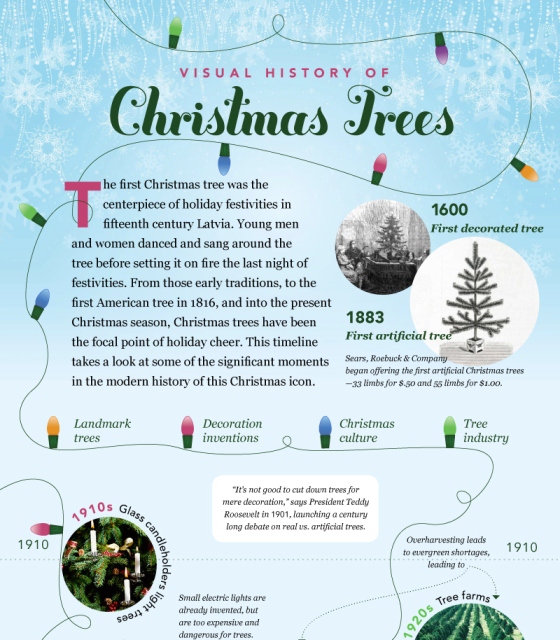
The modern Christmas tree tradition as we know it today has a rich history that spans centuries. The evergreen fir tree has been a symbol of life and fertility in many cultures, dating back to ancient civilizations. However, the modern tradition of decorating a Christmas tree originated in 16th-century Germany.

The modern Christmas tree tradition is often attributed to Martin Luther, a German Protestant reformer, who is said to have decorated a small fir tree with candles to remind his children of the importance of faith and the light of Christ. This tradition was popularized in the 18th century by Prince Albert, the German-born husband of Queen Victoria of England.
Early Christmas Tree Traditions
Before the modern Christmas tree tradition took hold, ancient cultures celebrated the winter solstice with various festivals and rituals. The evergreen fir tree was a symbol of life and fertility in many cultures, including ancient Egypt, China, and Scandinavia.
In ancient Rome, the festival of Saturnalia was celebrated in December, which involved the exchange of gifts, feasting, and the decoration of homes with evergreen branches. Similarly, in ancient Germany, the festival of Yule was celebrated, which involved the lighting of fires and the decoration of homes with evergreen branches.
The Role of Prince Albert in Popularizing the Christmas Tree Tradition
Prince Albert, the German-born husband of Queen Victoria of England, is credited with popularizing the Christmas tree tradition in the 19th century. Albert brought the tradition to the British court, and it soon spread to the upper classes and eventually to the general population.
The Illustrated London News published an illustration of Queen Victoria and Prince Albert celebrating Christmas with a decorated tree in 1848. This illustration helped to popularize the tradition, and soon, Christmas trees became a staple of British and American holiday celebrations.

German Immigration and the Spread of the Christmas Tree Tradition
German immigration to the United States in the mid-19th century helped to spread the Christmas tree tradition. German immigrants brought their traditions and customs with them, including the Christmas tree. The first American Christmas tree lot was set up in 1851 by a German immigrant named Mark Carr in New York City.
The tradition quickly gained popularity, and by the early 20th century, Christmas trees had become a staple of American holiday celebrations. Today, the Christmas tree tradition is celebrated in many countries around the world, with different cultures adding their own unique twists and traditions.
The Role of American Literature and Media in Shaping the Christmas Tree Tradition
American literature and media played a significant role in shaping the Christmas tree tradition in the United States. The poem "A Visit from St. Nicholas" (also known as "The Night Before Christmas") by Clement Clarke Moore helped to popularize the idea of Santa Claus and the Christmas tree.
The poem, which was first published in 1823, describes the arrival of Santa Claus on Christmas Eve and the decorations of the Christmas tree. The poem's vivid descriptions of the Christmas tree and the festivities surrounding it helped to create a sense of nostalgia and wonder around the holiday season.

The Evolution of Christmas Tree Decorations
Over the centuries, Christmas tree decorations have evolved significantly. From simple candles and fruits to elaborate lights and ornaments, Christmas tree decorations have become an integral part of the holiday tradition.
In the early days of the Christmas tree tradition, decorations were simple and homemade. People used candles, fruits, and nuts to decorate their trees. With the advent of electricity, Christmas tree lights became a popular decoration.
Today, Christmas tree decorations come in a wide range of shapes, sizes, and materials. From traditional glass ornaments to modern LED lights, there is something for everyone.
The Impact of Globalization on Christmas Tree Traditions
Globalization has had a significant impact on Christmas tree traditions around the world. With the spread of Western culture and consumerism, Christmas tree traditions have become more commercialized.
In many countries, Christmas trees are now seen as a symbol of prosperity and wealth. The commercialization of Christmas has led to a homogenization of traditions, with many countries adopting Western-style Christmas tree decorations and customs.
However, globalization has also led to a renewed interest in traditional Christmas tree customs and decorations. Many people are now seeking out unique and handmade decorations that reflect their cultural heritage.

Conclusion
The modern Christmas tree tradition has a rich history that spans centuries. From its origins in 16th-century Germany to its spread around the world through globalization, the Christmas tree has become a symbol of the holiday season.
Whether you're decorating a tree with traditional candles and ornaments or modern LED lights and decorations, the Christmas tree tradition is a time to come together with family and friends and celebrate the magic of the holiday season.




What is the origin of the modern Christmas tree tradition?
+The modern Christmas tree tradition originated in 16th-century Germany.
Who is credited with popularizing the Christmas tree tradition in the 19th century?
+Prince Albert, the German-born husband of Queen Victoria of England, is credited with popularizing the Christmas tree tradition in the 19th century.
How has globalization impacted Christmas tree traditions around the world?
+Globalization has led to the commercialization of Christmas tree traditions, but it has also led to a renewed interest in traditional Christmas tree customs and decorations.